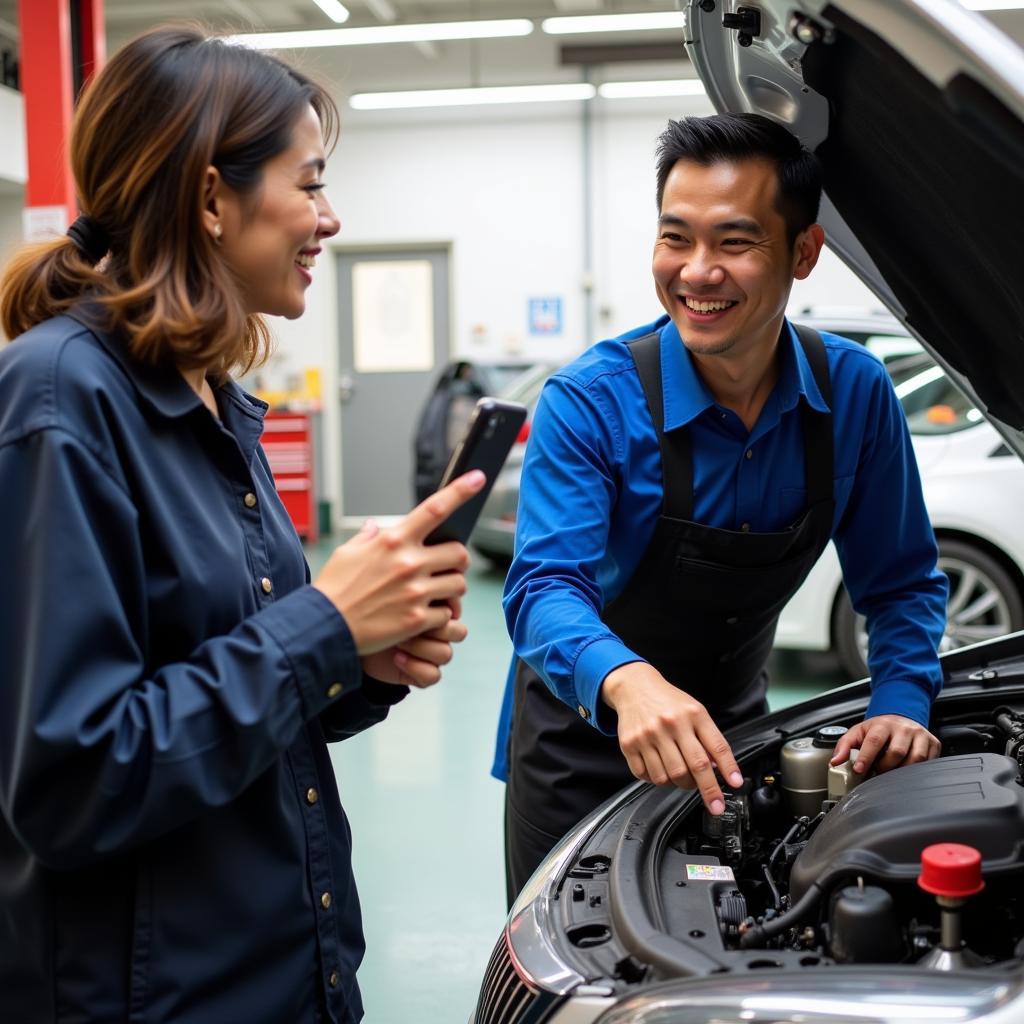Finding reliable car repair services in Vietnam can be challenging, especially if you’re unfamiliar with the local language and customs. Whether you’re a local car owner, a garage owner, or an auto technician, this guide will provide valuable information on how to “Fix Car In Vietnamese” and navigate the automotive repair landscape in Vietnam.
Understanding the Vietnamese Auto Repair Scene
Navigating the auto repair world in Vietnam requires understanding the local context. Many smaller garages operate informally, relying on word-of-mouth referrals. Larger, more established service centers are emerging, particularly in urban areas like Hanoi and Ho Chi Minh City. Knowing how to communicate your needs, even with basic Vietnamese phrases, can greatly enhance your experience.
Finding a Reliable Mechanic (“Sua chua o to” in Vietnamese)
Finding a trustworthy mechanic is crucial. Ask for recommendations from locals, expat communities, or online forums. Look for garages that specialize in your car’s make and model. Don’t hesitate to ask about certifications and experience, even if communication is a bit tricky. A little research upfront can save you a lot of headache down the road.
Common Car Problems and Solutions in Vietnam
Vietnam’s tropical climate and challenging road conditions can lead to specific car issues. Overheating, tire damage, and suspension problems are common. Understanding these common problems can help you prepare and take preventative measures.
Dealing with Overheating (“Nong may” in Vietnamese)
Overheating is a frequent issue in Vietnam’s hot and humid climate. Ensure your cooling system is functioning correctly. Regularly check your coolant levels and have your radiator inspected for leaks or blockages. Knowing how to say “nong may” (overheating) can help you quickly communicate the problem to a mechanic.
Addressing Tire Damage (“Lop xe bi hu” in Vietnamese)
Potholes and debris on Vietnamese roads can lead to frequent tire damage. Regularly check your tire pressure and tread depth. Consider carrying a spare tire and knowing how to change it. Knowing the phrase “lop xe bi hu” (tire damage) will be beneficial when seeking assistance.
Troubleshooting Suspension Issues (“He thong treo bi hong” in Vietnamese)
Rough roads can take a toll on your car’s suspension. Regular inspections are vital. Look for signs of wear and tear, such as unusual noises or uneven tire wear. Being able to explain “he thong treo bi hong” (suspension problems) will aid in getting the right repairs.
Communicating Effectively with Vietnamese Mechanics
While English proficiency is increasing, clear communication can still be a challenge. Learning a few basic Vietnamese phrases related to car repair can be incredibly helpful. For instance, “xe tôi bị hỏng” (my car is broken) is a good starting point. Don’t be afraid to use gestures and visual aids. A translation app can also be a valuable tool.
 Communicating with a Vietnamese Mechanic
Communicating with a Vietnamese Mechanic
Conclusion: Mastering Car Repair in Vietnam
Fixing a car in Vietnam requires a blend of preparation, resourcefulness, and cultural awareness. By understanding the local context, knowing some key phrases, and proactively addressing common car issues, you can navigate the challenges and keep your vehicle running smoothly. Remember, “fix car in Vietnamese” encompasses more than just the technical aspects; it involves understanding the local environment and communicating effectively. Need further assistance? Contact AutoTipPro at +1 (641) 206-8880 or visit our office at 500 N St Mary’s St, San Antonio, TX 78205, United States.




Leave a Reply